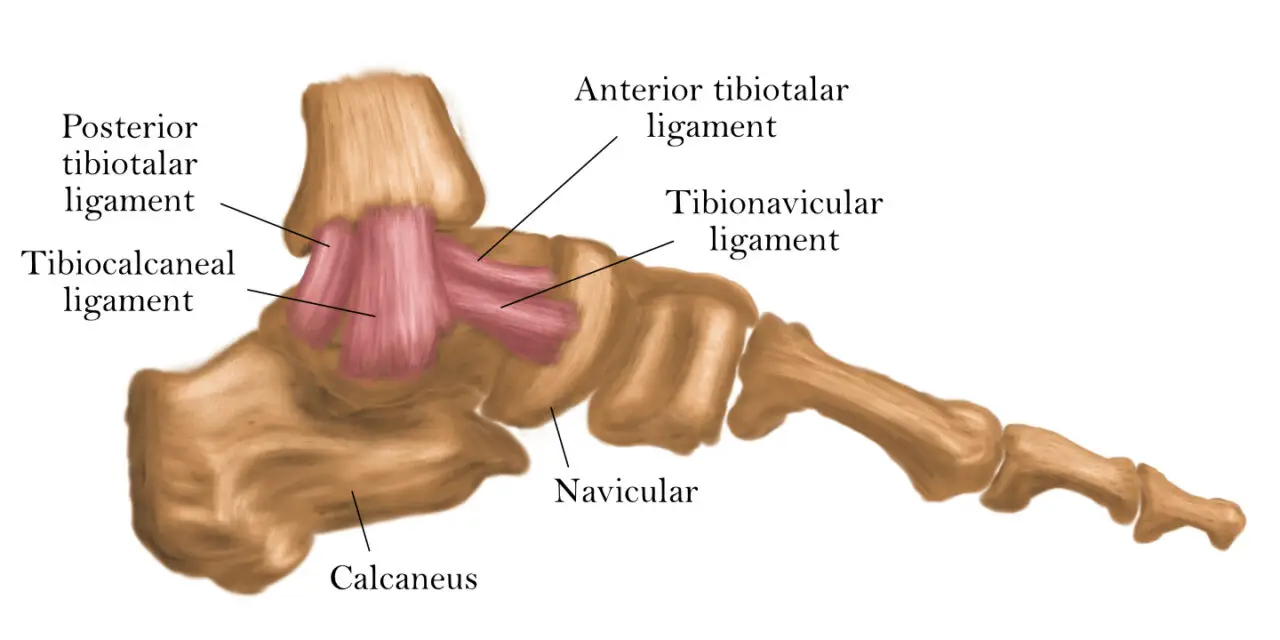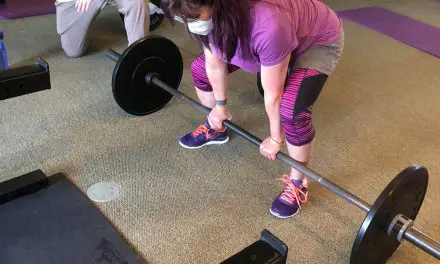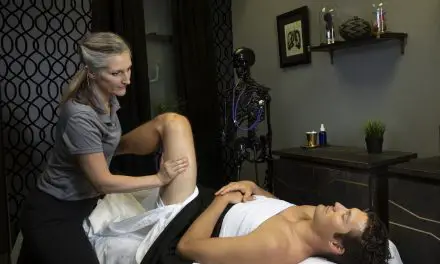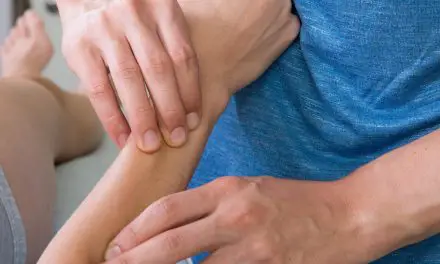Medial ankle sprains often occur when the foot is twisted inwards or dorsiflexed too far, stressing or tearing one or more of these ligaments. They can be caused by physical trauma, such as a fall, sudden movements during sports, or incorrectly landing a jump. Current evidence suggests that of all annual sports-related injuries, as much as 40% of them are ankle sprains.
Sprains occur when ligaments, the tough bands of tissue that connect bones and hold joints together, are stretched or torn. The same is true for fractures, which are breaks in a bone due to extra stress or trauma.
And so, it’s important to treat ligament tears or sprains promptly as untreated sprains can lead to chronic instability and pain in the ankle joint. Treatment often includes immobilization, physical therapy, and in some cases, surgery.
What ligaments are in the medial ankle?
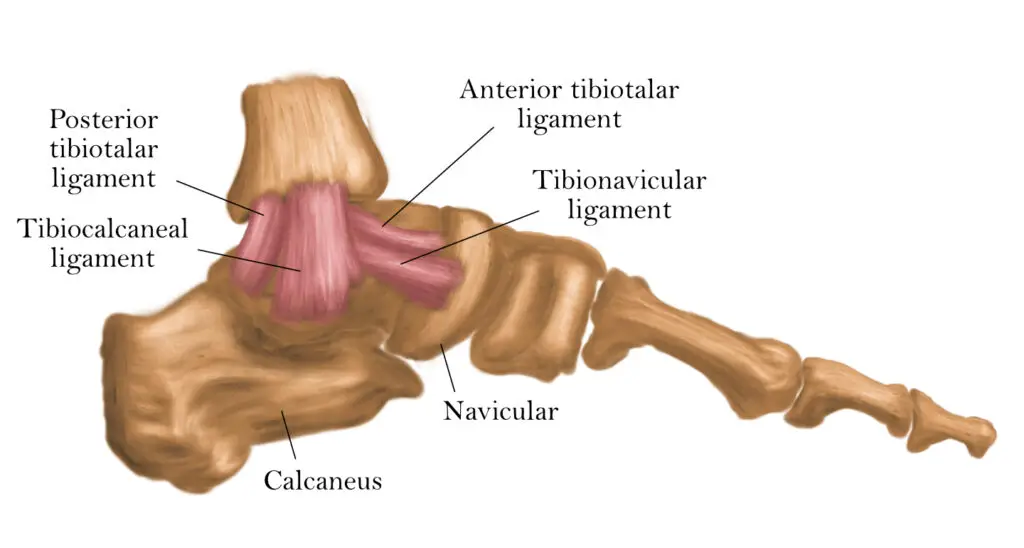
Ligaments of the medial ankle. (Image by Nick Ng)
The medial ankle consists of several layers of ligaments that provide stability and mobility to the joint. These ligaments connect the tibia, fibula, and talus together and work together to limit how much your foot can turn outward as well as protect against inward rotation.
The deltoid ligament is one of the strongest in the ankle and is located on the inner side of the joint. It consists of four bands of fibers:
- anterior talofibular ligament (ATFL)
- tibiocalcaneal ligament
- tibionavicular ligament
- posterior talofibular ligament (PTFL)
They join together to form a triangular shape and provide ankle stability by limiting too much foot eversion, or excessive outward rotation of the foot.
The ATFL and PTFL, also known as the “lateral collateral ligaments,” are located on either side of the ankle and help to keep it stable by limiting movement inwards or outwards. They are particularly vulnerable to injuries since they’re located close to the surface of the skin and can be easily stretched or torn with sudden twisting motions.
The tibionavicular ligament is also known as the spring ligament, and it connects between the talus bone and navicular bone.
The calcaneofibular ligament (CFL) is located on the outer side of the ankle joint and connects between the fibula bone and calcaneus bone. It’s a strong ligament that helps to limit eversion and inversion (outward and inward twisting of the foot) as well as excessive outward rotation.
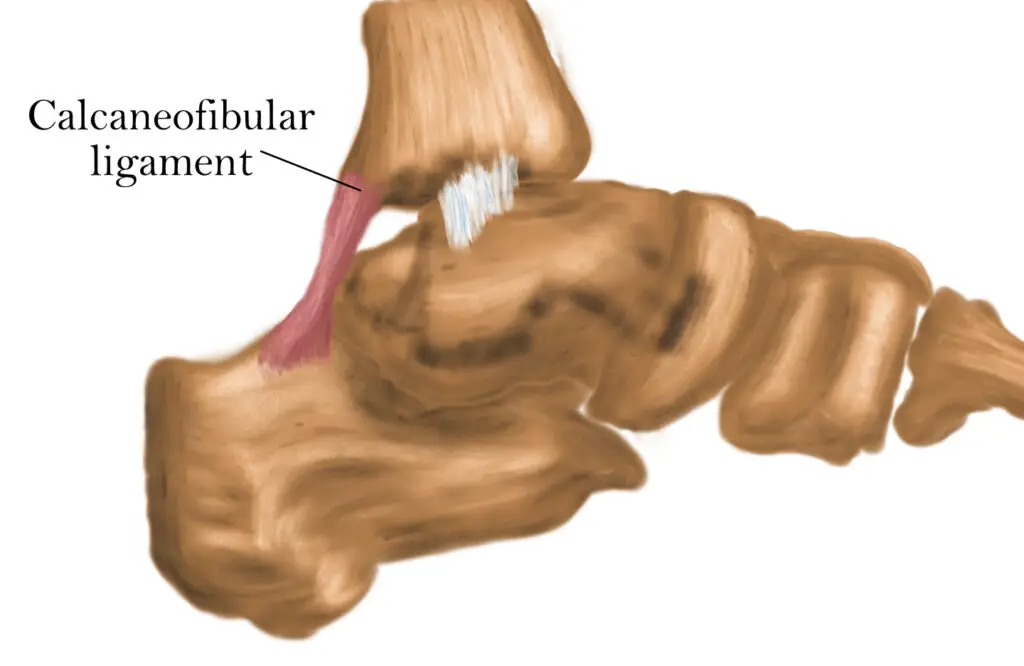
The calcaneofibular ligament starts at the the tip of the lateral malleolus of the lower tibia. (Image by Nick Ng)
How can I tell if I have a torn medial ankle ligament?
Ankle injuries can range from mild to severe. The signs of a torn medial ankle ligament, as listed above, can include severe pain, sharp twinges, difficulty with weight bearing on the affected side, as well as swelling around the area of injury.
You may also experience a popping sound or sensation when the ligament tears. However, not all of these symptoms are always present. If you’re able to move the joint without much discomfort but it still feels unstable or lacking in strength, this could still point to a ligament sprain.
When a medial ankle ligament is torn, it can usually be detected by physical examination and confirmed through imaging tests such as X-rays or MRI scans. Though sprains and strains are often lumped together, they are not the same injury.
Medial ankle strains are soft tissue injuries of the muscles and tendons, not injury to the ligaments. Strains may present with similar symptoms causing pain and instability in the ankle, but they’re usually less severe than sprains.
Types of ankle sprains
There are several different types of ankle sprains, depending on which ligament has been injured.
- Grade I sprains involve mild stretching or tearing of the ligament and can usually be treated at home.
- Grade II sprains involve a more significant tear of the ligament and may require medical attention, such as physical therapy or bracing.
- Grade III sprains involve complete tearing of the ligaments and often require surgery to repair.
Medial ankle sprains can be caused by physical trauma, such as a fall, sudden movements during sports, or incorrectly landing a jump. Although these injuries tend to increase with sports-related activities, they can happen to anyone. A good way to prevent ankle sprains is to pay attention to body mechanics, use proper conditioning and stretching techniques, and wear appropriate footwear.
Can a torn ankle ligament heal by itself?
It may take a ligament several weeks or even months to heal by itself. While resting is key for proper healing and for avoiding further damage, physical therapy in conjunction with rest can help to strengthen surrounding muscles and tendons to further promote the healing process.
For a mild to moderate severity ankle sprain, it’s possible to heal without surgery or other invasive treatments. Treatment involves acute treatment like rest, compression, and elevation for the first 72 hours after injury followed by functional or conservative treatments for long-term care.
Functional treatment refers to forms of treatment which involves exercise to rebuild strength and function, whereas conservative treatments involve immobilization of the joint.
The evidence further suggests that functional treatments such as rehabilitation and manual therapy speed up recovery when done correctly and are recommended in conjunction with conservative treatments and as a follow up for surgery. In some cases, an immobilization device (such as a cast or splint) may be enough to help the body heal the ligament. However, this is not recommended in all cases and should be done under a doctor’s guidance.
Some evidence suggests that those who suffer from lateral ankle sprains and do not seek out medical help are more likely to reinjure themselves. However, this is likely the case with all forms of sprains. This is due to the weakening of the damaged tissue combined with our bodies ability to compensate.
Severe sprains where other structures have been damaged may require surgery for the patient to heal properly and regain full function of the ankle. Surgery is generally necessary if the ligament has torn completely, meaning that it will not heal or reattach on its own.
Related: [Is my ankle broken or sprained: how to tell the difference]

Lindsay Jones, LMT
Lindsay is a licensed massage therapist and a mother of three, who specializes in rehabilitation with emphasis on prenatal and postnatal care.
After graduating from the National Holistic Institute in San Jose, Calif., she went on to study how pain affects the body and how it can be alleviated during the constant changes of pregnancy and early motherhood.
In her free time, Lindsay has a deep love of all forms of art from storytelling and music to sewing and painting.

